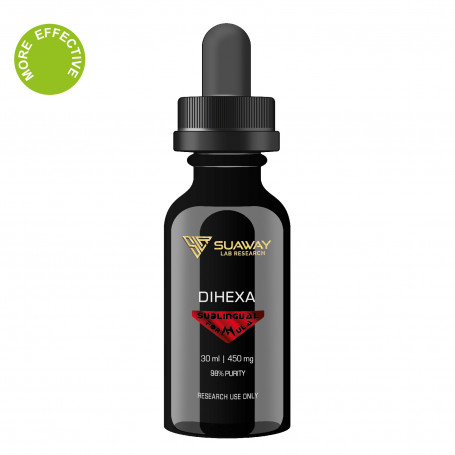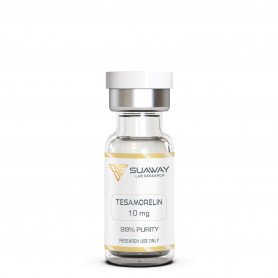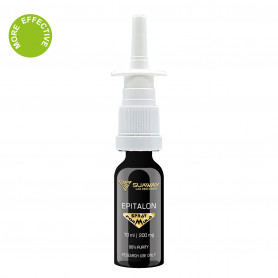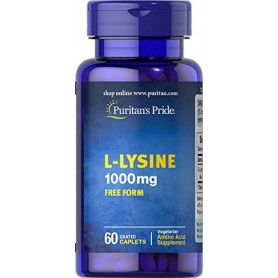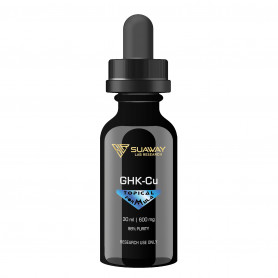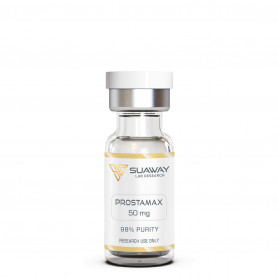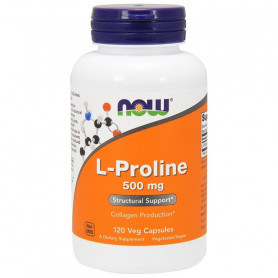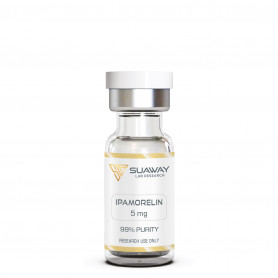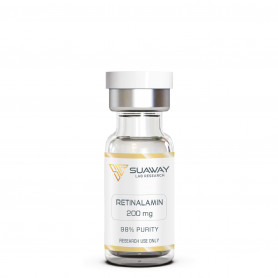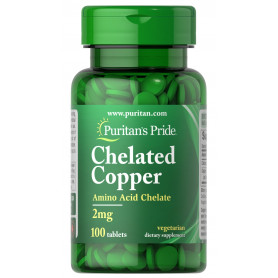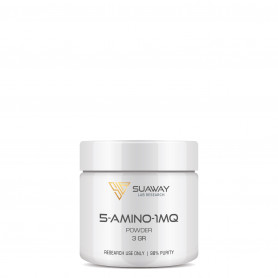DIHEXA - 30ml/450mg
The following is a list of some of the advantages of Dihexa:
- Mending of damaged nerve cells
- Promotion of new connections between nerve cells
- Generation of new neurons from stem cells
- Can Help Reverse the Neurological Damage Caused by Alzheimer's and Parkinson's Diseases
- Enhanced social perception as well as interpersonal communication abilities
- More effective depression management or complete eradication
- Advanced problem-solving capabilities
- Improved mental stamina
- A higher ability for both long-term and short-term memory overall
FRESHLY PREPARED SOLUTION
Description
STRUCTURE
Sequence: Hexanoyl-Tyr-Ile-Ahx-NH2
Molecular Formula: C27H44N4O5
Molecular Weight: 504.28 g/mol
CAS number: 1401708-83-5
Peptide purity: greater than 98%
Other details: No TFA Salt, No Mannitol
Storage: This product must be stored at 4°C. Not suitable for freezing.
DESCRITPION
It is well understood that dihexa is an N-hexanoic-Tyr-file-(6) aminohexanoic amide. Angiotensin IV was used to create this oligopeptide, thus, therefore, bears the name angiotensin IV oligopeptide. Dihexa is a nootropic and small peptide that has been developed by researchers at Washington State University. It has a high binding affinity to hepatocyte growth factor (HGF) and its receptor c-Met. Its purpose is to potentially improve certain cognitive functions of potential trauma-based brain disorders and neurodegenerative conditions such as Alzheimer's disease through increased synaptogenesis.
According to the most recent research, the average half-life of the substance is roughly one week, which is much longer than the half-lives of almost any other neurogenic molecule. Synaptogenesis is the most prominent consequence that has been seen. In models of impairment, the medicine also brought back the synthesis of tyrosine hydroxylase in the substantia nigra. Tyrosine hydroxylase is an enzyme that is necessary for the creation of catecholamine’s like dopamine and noradrenaline. In addition to this, research demonstrates that it Increases in critical thinking as a result of the anterior cingulate cortex, the dysfunction of which has been linked to mental illnesses such as ADHD and ASD.
Dihexa, unlike many other existing therapy options for disorders involving memory loss (such as Alzheimer's Disease), may help repair brain damage that has already happened. These other treatments either slow down cell death or inhibit cholinesterase. This peptide is ten million times more potent than BDNF, which stands for brain-derived neurotropic factor and is widely regarded as the primary factor responsible for the development of synapses.
Dihexa is a first-class substance that may be taken orally, and it exerts its effects by penetrating the blood-brain barriers. This also works through facilitating one’s memory consolidation and even memory retrieval.
Studies have shown that dihexa has the potential to be used as a therapy for neurodegenerative disorders such as Parkinson's disease and Alzheimer's disease. It alters genetic expression, increases receptor sensitivity, and sends messages to the neurons in the brain to tell them to repair the synapses. Dihexa has shown promise in early research for helping patients with traumatic brain injuries (TBI) resulting from head and neck traumas restores function.
The neurodegenerative effects of Alzheimer's disease may be reversible by the use of Dihexa
Alzheimer's disease is a progressive degenerative brain ailment that is the leading cause of dementia and cognitive loss. It accounts for between 60 and 80 percent of all instances of dementia and is thus the most frequent kind. The development of amyloid plaques and neurofibrillary tangles in the brain are two hallmarks of Alzheimer's disease. Plaques and tangles cause damage and death to neurons, which leads to a loss of cognitive ability. It has been shown that treatment with Dihexa can lessen the number of amyloid plaques and neurofibrillary tangles found in the brain. In addition, levels of essential neurotropic factors such as brain-derived neurotropic factor (BDNF) and nerve growth factor are raised as a result of Dihexa use (NGF). The survival of neurons, the flexibility of synapses, and the creation of memories are all significantly influenced by these neurotropic substances.
Parkinson's disease treatment and management
The purpose of this project was to get a head start on determining the therapeutic potential of a small molecule activator of a growth factor called a hepatocyte growth factor. This growth factor is known to shield nerve cells from damage, stimulate new connections among nerve cells, and induce the production of new neurons derived from stem cells. The primary idea behind this investigation was based on the concept that the medication candidate Dihexa would be successful in regaining motor function that had been lost in a conventional pre-clinical model of Parkinson's disease. This notion was verified by the findings of this research, which showed that Dihexa, whether administered by abdominal injection or orally, entirely revived any motor function that had been lost. In addition, after 34 days of therapy, the staining for tyrosine hydroxylase (TH), which is a marker for the dopamine neurons that were destroyed as a result of chemical lesioning, rebounded to a state that was almost identical to normal.
REFERENCES
J.B. Weiss et al., "Stem cell, Granulocyte-Colony Stimulating Factor and/or Dihexa to promote limb function recovery in a rat sciatic nerve damage-repair model: Experimental animal studies" [ScienceDirect]
J.W. Harding "Development of Small Molecule Hepatocyte Growth Factor Mimetics for the Treatment of Parkinson’s Disease" [The M.J. Fox Foundation]
C. Benoist et al., "The procognitive and synaptogenic effects of angiotensin IV-derived peptides are dependent on activation of the hepatocyte growth factor/c-met system" [PubMed]
J.W. Wright et al., "The development of small molecule angiotensin IV analogs to treat Alzheimer's and Parkinson's diseases" [PubMed]
X. Sun et al., "AngIV-Analog Dihexa Rescues Cognitive Impairment and Recovers Memory in the APP/PS1 Mouse via the PI3K/AKT Signaling Pathway" [PubMed]
J.W. Wright et al., "The Brain Hepatocyte Growth Factor/c-Met Receptor System: A New Target for the Treatment of Alzheimer's Disease" [PubMed]
S. Mathapati et al., "Small-Molecule-Directed Hepatocyte-Like Cell Differentiation of Human Pluripotent Stem Cells" [PubMed]
J.K Ho, D.A. Nation "Cognitive benefits of angiotensin IV and angiotensin-(1-7): A systematic review of experimental studies" [PubMed]
AT McCoy et al., "Evaluation of metabolically stabilized angiotensin IV analogs as procognitive/antidementia agents" [PubMed]
R. Siller et al., "Small-molecule-driven hepatocyte differentiation of human pluripotent stem cells" [PubMed]
DISCLAIMER
This product is intendend for lab research and development use only. These studies are performed outside of the body. This product is not medicines or drugs and has not been approved by the FDA or EMA to prevent, treat or cure any medical condition, ailment or disease. Bodily introduction of any kind into humans or animals is strictly forbidden by law. This product should only be handled by licensed, qualified professionals.
All product information provided on this website is for informational and educational purposes only.

